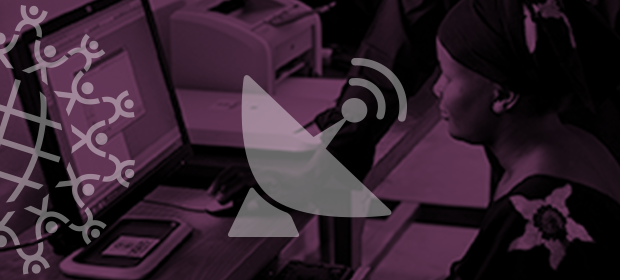Where We Work
See our interactive map


From the COVID Digital Response Workshop.
The COVID Digital Response Workshop on March 12 brought together 300 digital development practitioners from governments, donors, and health systems in low- and middle-income countries to explore the challenges and opportunities for COVID-19 response.
Subscribe now to get invited to future events.
Over three hours, we explored the novel coronavirus impact on health care systems and where digital health solutions could improve resilience and reduce the disruption of pandemic infections. Through the engaging presentations, interactive breakout sessions, and quick lightning talks, I came away with several insights:
My first takeaway was that it is totally possible to engage 300 people for three hours on a massive Zoom teleconference. We did this by combining a rock star lineup with high-quality participants and stellar moderation, resulting in very detailed documentation. Probably better documentation than any in-person event since every session was recorded.
I am now confident that we can scale a virtual Global Digital Development Forum to 1,000 participants, creating a massive online meeting that rivals an in-person conference for learning and impact. Look for a future announcement shortly and get in touch if you’re interested in helping.
Time and again, presenters and discussants made the point that the most effective investments are incremental improvements to existing health care systems—not radically new innovations. No one has time to learn a whole new workflow when they are overwhelmed with coronavirus caseloads.
Better to invest in strengthening existing systems with the boring but very effective maintenance and support investments that are often skipped in normal times. If there is innovation, it should be incremental and focused on easy wins that come with minimal disruption.
My favorite example of this idea is HealthAlert, which uses the popular WhatsApp communication platform to send COVID-19 messages to South Africans based on their questions and National Department of Health guidelines. The only “new” thing is a natural language processing engine that answers most queries automagically.
This system relies on technology that all users are already comfortable with and know how to operate—no training or behavior change needed for adoption. This means HealthAlert can be rolled out today in any country where WhatsApp is popular, which is pretty much any LMIC.
I was surprised that a group of techies would be so in favor of old school human approaches, but multiple people focused on the need to invest in human resources for health. This could be simply better training and support of frontline health workers, to advanced decision support tools for quick COVID-19 diagnosis—by a health worker or the patient themselves.
This will be more important when frontline health workers themselves become sick and need diagnosis and treatment, further straining the health system. Here, there were calls for automated systems that patients could use to self-diagnose ailments.
I was sold on COMPASS when I saw how easy it would be for frontline health workers to access the platform and review standardized programming guidelines. COMPASS is already deployed in multiple countries and supports staff at all levels with modular interventions. So again, no new software tools to learn.
COMPASS now has coronavirus modules developed by health experts for preventative measures and case management at the facility and community levels that include localized indicators, clinical forms, auditing activities, and procurement lists. Health workers can already refer to resources in COMPASS to understand the impact of coronavirus on their catchment populations.
We heard from USAID and the Kaiser Family Foundation about $8.3 billion in financial assistance from multiple corporate, foundation, and government donors. Both foundations and corporations were fast in pledging donations for COVID-19 response, and the money is moving quickly to affected communities.
However the real donation volume comes from government—91% of the total amount—albeit through a slower process. Bilateral funding will also have a longer lasting impact on health systems.
It was particularly gratifying to hear about investments from the US government. The Coronavirus Bill provides $986 million to USAID for global health programs, international disaster assistance, and economic support and $300 million goes to CDC for global COVID-19 disease detection and emergency response efforts.
Now if only that was enough to stop COVID-19…
If you attended the workshop, what were your insights or takeaways? How do you see digital health increasing the COVID-19 response in LMIC health systems?
Even if you didn’t attend, please share the challenges you see for health systems, and how we can respond to this global health care emergency.
This article was originally published on ICTWorks.org on March 13, 2020.
Get the latest updates from the blog and eNews




